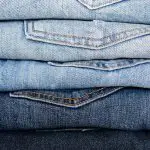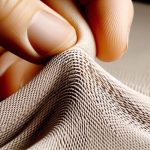You might be surprised to learn that rayon, often praised for its softness, also has some natural moisture-wicking abilities. But does that mean it’s a great choice for keeping you dry during intense workouts or hot days? While it pulls sweat away from your skin, there are hidden drawbacks you should consider before relying on it for moisture management. Let’s explore what makes rayon both promising and problematic in this regard.
Table of Contents
Key Takeaways
- Rayon excels at moisture wicking by drawing sweat away from the skin, keeping wearers dry and comfortable in warm weather.
- It absorbs moisture quickly but releases it slowly, causing lingering dampness and longer drying times than synthetic fibers.
- Rayon offers better breathability than polyester but is less effective than synthetic fabrics for intense workouts or humid conditions.
- Proper care, such as gentle washing and air drying, is essential to maintain rayon’s moisture-wicking properties and garment longevity.
- Rayon production raises environmental concerns, so choosing responsibly sourced or blended fabrics balances comfort with sustainability.
What Makes Rayon (Viscose) Effective for Moisture Wicking
Rayon, also known as viscose, excels at moisture wicking because of its unique fiber structure.
Rayon’s unique fiber structure makes it highly effective at pulling moisture away from your skin.
When you wear rayon, its fibers actively draw moisture away from your skin, thanks to how they’re arranged. This fiber structure creates tiny channels that pull sweat into the fabric, allowing it to spread out and evaporate quickly.
You’ll notice that rayon’s moisture absorption isn’t just about soaking up sweat but about moving it efficiently, keeping you dry and comfortable.
Unlike some synthetic fibers that trap moisture, rayon balances softness with breathability.
The Benefits of Using Viscose in Warm Weather Apparel
When temperatures rise, you want clothing that keeps you cool and comfortable. Viscose delivers viscose comfort by feeling soft and breathable against your skin, allowing moisture to evaporate quickly. This makes it ideal for warm weather, as it prevents that sticky, clammy feeling you hate.
You’ll appreciate how viscose fabrics drape beautifully, enhancing your summer style without sacrificing ease or breathability. Whether you’re out for a casual stroll or attending a sunny outdoor event, viscose helps regulate your body temperature while maintaining a polished look.
Its lightweight nature and moisture-wicking ability mean you stay fresh, dry, and stylish all day long. Choosing viscose in your warm weather wardrobe guarantees you don’t have to compromise comfort for fashion.
Challenges and Drawbacks of Rayon in Moisture Management
Although rayon offers excellent breathability, you might find it struggles to wick moisture as effectively as some synthetic fabrics.
One of the main rayon limitations is its tendency for moisture retention, which can leave you feeling damp and uncomfortable during intense activity. Rayon absorbs water quickly but releases it slowly, so sweat can linger against your skin instead of evaporating. This drawback affects how well rayon manages moisture compared to fabrics designed specifically for wicking.
Additionally, rayon’s moisture retention can lead to longer drying times, making it less ideal for workouts or humid conditions. If you need clothing that efficiently pulls sweat away, you should be aware of these rayon limitations before relying on it exclusively for moisture management.
How Rayon Compares to Other Moisture-Wicking Fabrics
You’ll want to see how rayon stacks up against other moisture-wicking fabrics in breathability, performance, and care.
Comparing these factors helps you pick the right material for your needs.
Let’s explore where rayon shines and where it might fall short.
Breathability Comparison
Since breathability plays a crucial role in moisture-wicking fabrics, understanding how rayon stacks up against materials like cotton, polyester, and bamboo can help you make smarter clothing choices.
Breathability factors depend largely on fabric structure—how fibers are woven or knitted affects airflow and moisture evaporation. Rayon’s semi-synthetic nature gives it a smooth, porous fabric structure, making it more breathable than polyester but slightly less than natural fibers.
Here’s how rayon compares in breathability:
- More breathable than dense polyester knits
- Slightly less breathable than cotton’s natural weave
- Comparable to bamboo in moisture permeability
- Offers good airflow due to its fiber porosity
- Breathability can vary based on rayon blend and fabric finish
Knowing these breathability factors helps you pick the best fabric for comfort and performance.
Moisture-Wicking Performance
Understanding breathability lays the groundwork for evaluating how well rayon handles moisture compared to other fabrics.
Rayon’s moisture absorption is quite high, thanks to its cellulose-based fiber structure. This means it soaks up sweat quickly, making you feel dry initially.
However, unlike synthetic wicking fabrics designed to pull moisture away from your skin and dry fast, rayon retains water longer. Its fabric properties don’t facilitate rapid evaporation, so dampness can linger.
If you want effective moisture management, especially during intense workouts, polyester or nylon might outperform rayon.
Rayon’s natural feel and absorption can be comfortable in casual wear, but for active use where quick drying matters, its moisture-wicking performance falls short compared to engineered synthetic fabrics.
You’ll want to reflect on this when choosing materials for moisture control.
Durability and Care
Although rayon offers a soft, breathable feel, it doesn’t hold up as well as many synthetic moisture-wicking fabrics when it comes to durability and care.
You’ll find that rayon longevity often falls short compared to polyester or nylon, especially under frequent use and washing. When it comes to fabric maintenance, rayon demands more delicate handling to avoid shrinking, stretching, or weakening fibers.
Keep these points in mind for rayon care:
- Hand wash or use a gentle cycle with cold water
- Avoid high heat in drying; air dry is best
- Use mild detergents to prevent fiber damage
- Store away from direct sunlight to reduce fading
- Avoid wringing to maintain fabric shape
Following these tips will help you extend rayon’s lifespan but expect more upkeep than with synthetic wicking fabrics.
Proper Care Techniques to Maintain Rayon’s Wicking Properties
To keep rayon’s wicking abilities working well, you need to handle washing and drying carefully.
You’ll also want to pay attention when ironing and storing your rayon garments to prevent damage.
Let’s look at the best ways to care for rayon so it stays effective.
Washing and Drying
When you wash and dry rayon properly, you help preserve its natural wicking ability that keeps moisture away from your skin.
Following the right laundry tips and drying methods prevents damage and maintains rayon’s softness and breathability. Always handle rayon gently to avoid shrinking or weakening the fibers.
Here are key washing and drying tips to keep in mind:
- Use cold water and a gentle cycle or hand wash
- Avoid bleach and harsh detergents
- Turn garments inside out before washing
- Lay flat or hang to dry away from direct sunlight
- Skip the dryer or use the lowest heat setting if necessary
Ironing and Storage
Properly ironing and storing your rayon garments plays a big role in preserving their natural wicking ability.
When ironing, use low heat settings to avoid damaging fibers. Always iron on the reverse side or place a pressing cloth between the iron and fabric to prevent shine or scorching. Avoid excessive pressure, as rayon is delicate and can easily lose its texture.
For storage solutions, hang your rayon clothes on padded hangers to maintain shape and airflow, reducing moisture buildup that can weaken fibers.
If folding, place acid-free tissue paper between folds to minimize creases and fabric stress. Keep your garments in a cool, dry place away from direct sunlight, which can degrade rayon’s performance.
Following these ironing techniques and storage solutions helps maintain rayon’s wicking properties longer.
Ideal Uses of Viscose for Active and Casual Wear
Although viscose may not be as well-known as some synthetic fabrics for activewear, it offers excellent moisture-wicking properties that keep you comfortable during both workouts and casual outings.
Viscose blends provide excellent moisture-wicking, keeping you comfortable in workouts and casual wear alike.
If you lead an active lifestyle but don’t want to sacrifice casual fashion, viscose blends can be your go-to choice. It balances breathability and softness, making it ideal for versatile clothing.
Consider using viscose for:
- Lightweight workout tops that wick sweat efficiently
- Casual tees that stay dry and feel soft
- Layering pieces perfect for active days and social settings
- Dresses and skirts that combine style with moisture management
- Lounge wear that supports comfort without overheating
Viscose lets you stay fresh while looking good, whether you’re hitting the gym or running errands.
Environmental and Durability Considerations for Rayon Use
Since rayon is a semi-synthetic fiber derived from natural sources, you should consider both its environmental impact and durability before choosing it for your wardrobe.
Sustainability concerns arise because rayon production often involves chemically intensive processes and deforestation. When you look at a lifecycle analysis, you’ll see that while rayon starts from renewable resources, its manufacturing can strain ecosystems and pollute waterways.
Additionally, rayon tends to be less durable than synthetic fibers, meaning garments may wear out faster, prompting more frequent replacements. If you want wicking properties but care about environmental footprint and longevity, weigh these factors carefully.
Choosing responsibly sourced rayon or blends with stronger fibers can help reduce negative impacts while still benefiting from rayon’s comfort and breathability.
Frequently Asked Questions
Can Rayon Cause Skin Irritation or Allergies?
You might feel like your skin’s throwing a thousand alarms if you have rayon sensitivity, as fabric allergies can cause irritation. Don’t worry; testing small patches first helps you avoid uncomfortable reactions from this fabric.
How Does Viscose Rayon Behave in Cold Weather?
In cold weather, viscose rayon tends to retain moisture, which can make you feel damp and chilly. Its temperature regulation isn’t great, so it might not keep you warm as effectively as other fabrics designed for cold conditions.
Is Viscose Rayon Safe to Use for Children’s Clothing?
You can safely use viscose rayon for children’s clothing if it meets safety standards and feels soft against their skin. Always check labels to guarantee children’s comfort and avoid irritation or allergies from poor-quality fabrics.
Does Rayon Fabric Have Any Odor Retention Issues?
You might find rayon fabric absorbs odors more than some materials, which can affect fabric freshness. If you want clothes that stay fresh longer, consider fabrics with better odor resistance or wash rayon frequently to reduce odor absorption.
Can Rayon Be Recycled or Repurposed Effectively?
Did you know less than 10% of rayon gets recycled? You can boost sustainability by exploring rayon recycling methods and repurposing rayon textiles into new products, reducing waste and extending the fabric’s life cycle effectively.
- Jaclyn Smith Fabric Coconut: a Review of This Rayon/Polyester Blend - June 29, 2025
- Jaclyn Smith Fabric Coconut: a Review of This Rayon/Polyester Blend - June 29, 2025
- How to Get Coconut Oil off Fabric Without Washing - June 29, 2025







